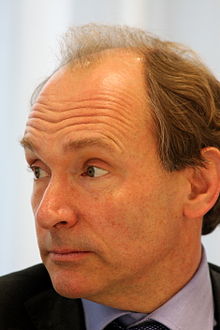The World Wide Web (abbreviated as WWW or W3,[2] commonly known as the Web), is a system of interlinked hypertext documents accessed via the Internet. With a web browser, one can view web pages that may contain text, images, videos, and other multimedia, and navigate between them via hyperlinks.
Sir Timothy John "Tim" Berners-Lee, OM, KBE, FRS, FREng, FRSA (born 8 June 1955),[1] also known as "TimBL", is a British computer scientist, MIT professor and the inventor of the World Wide Web. He made a proposal for an information management system in March 1989,[2] and on 25 December 1990, with the help of Robert Cailliau and a young student at CERN, he implemented the first successful communication between a Hypertext Transfer Protocol (HTTP) client and server via the Internet.[3]
The Web through my Lens
Tim created a great thing for all of us... And we'd like to share it with you...
Massachusetts Institute of Technology, also known as MIT, is a private research university located in Cambridge, Massachusetts, United States. MIT has five schools and one college, containing a total of 32 academic departments, with a strong emphasis on scientific and technological education and research.
Robert Cailliau (French: [kaˈjo]), born 26 January 1947, is a Belgian informatics engineer and computer scientist who, together with Sir Tim Berners-Lee, developed the World Wide Web.
Cailliau was born in Tongeren, Belgium. In 1958 he moved with his parents to Antwerp. After secondary school he graduated from Ghent University in 1969 as civil engineer in electrical and mechanical engineering (Flemish: Burgerlijk Werktuigkundig en Elektrotechnisch ingenieur). He also has an MSc from the University of Michigan in Computer, Information and Control Engineering, 1971.
The Hypertext Transfer Protocol (HTTP) is an application protocol for distributed, collaborative, hypermedia information systems.[1] HTTP is the foundation of data communication for the World Wide Web.










